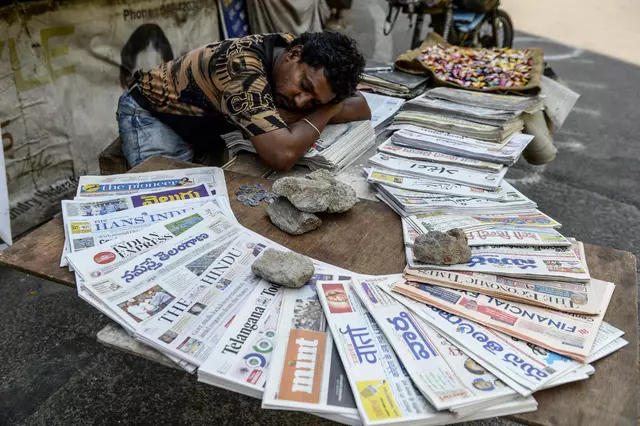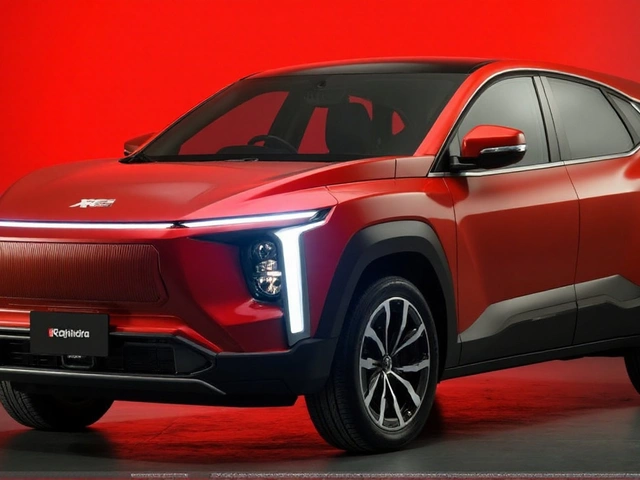
Exploring the Relationship Between the Indian Media and Prime Minister Narendra Modi
The relationship between the Indian media and Prime Minister Narendra Modi has been a source of contention since he took office in 2014. On one hand, there has been criticism of the Indian media for being biased in favour of the Prime Minister, while on the other, there have been allegations of the Prime Minister attempting to control the media. To explore the relationship between the Indian media and Prime Minister Narendra Modi, it is important to look at the history of the media in India and the actions of the Prime Minister since taking office.The Indian media has a long history of being biased in favour of the government in power, and the Prime Minister has been no exception. In the past, the media has been accused of favouring the ruling party and ignoring dissenting voices. This was especially true during the rule of the Congress party, which was in power for much of the 20th century.
Since taking office, Prime Minister Narendra Modi has been accused of attempting to control the media. This includes accusations of the Prime Minister using his influence to influence the media coverage of his government. His government has also been accused of using its power to crack down on dissenting voices in the media. For example, in 2018, the government revoked the accreditation of more than 20 journalists who had written critical articles about the government.
At the same time, there have also been reports of the Indian media favouring the Prime Minister. This includes reports of media outlets that have been accused of providing favourable coverage of the Prime Minister's policies and activities. There have also been reports of the Prime Minister's office providing financial incentives to media outlets in exchange for favourable coverage.
In conclusion, it is difficult to say whether the Indian media is PM Modi's media. It is clear that there is a complex relationship between the media and the Prime Minister, and it is likely that both sides have attempted to influence the coverage of the other. However, it is also important to remember that the media in India is independent and should not be influenced by the government or any other external force. The Indian media should be allowed to report freely and without fear of retribution.
Examining the Alleged Pro-Modi Bias of the Indian Media
The Indian media landscape has been rocked by allegations of a pro-Modi bias in recent months. Critics have accused the Indian media of giving the Prime Minister of India, Narendra Modi, preferential coverage and downplaying his political opponents. This has raised questions about the objectivity of the Indian media and whether it is truly independent or has become a mouthpiece for the Modi government.In order to understand the extent to which the Indian media is biased towards Modi, it is important to look at some of the allegations that have been leveled against it. Firstly, it has been alleged that the Indian media has given undue attention to Modi's speeches and activities while ignoring those of his opponents. This has been seen as a clear attempt to portray Modi in a positive light while sidelining his opponents.
Secondly, the Indian media has been accused of giving far greater airtime to the BJP and its allies than to the opposition parties. This has been seen as an attempt to give the impression that the BJP is the only viable option in Indian politics.
Thirdly, the Indian media has been accused of not reporting on the negative aspects of the Modi administration. This has been seen as an attempt to portray Modi in a positive light and to deflect attention away from issues such as corruption and nepotism.
Finally, the Indian media has been accused of not properly covering the protests that have taken place against the Modi government. This has been seen as an attempt to downplay the level of discontent among the people and to give the impression that all is well in India.
It is clear that there are serious allegations that the Indian media has become a mouthpiece for the Modi government. Whether or not these allegations are true is open to debate and it is ultimately up to the public to decide whether the Indian media is truly independent or has become a tool of the Modi government.
Analyzing the Indian Media's Coverage of Prime Minister Modi
The Indian media has been closely following the work of Prime Minister Narendra Modi since he came to power in 2014. For the most part, the coverage of PM Modi has been both positive and balanced. The media has been quick to report on his efforts to improve the economy, tackle corruption, and create jobs. There have been numerous stories about how Modi has worked to create an environment that is conducive to business and investment.At the same time, the Indian media has also been critical of some of Modi’s policies. Journalists have questioned his government’s decision to revoke Article 370, which gave special status to the state of Jammu and Kashmir. They have also questioned his handling of the economy, particularly his decision to demonetize the currency in 2016.
Overall, the media’s coverage of Prime Minister Modi has been largely positive and balanced. While there have been some criticisms, the overall coverage has mostly been focused on his achievements and his efforts to take India forward. It is clear that the Indian media is not “PM Modi’s media”, but rather an independent source that is providing an honest assessment of his work.
Investigating the Impact of Prime Minister Modi's Policies on the Indian Media
Since Narendra Modi became Prime Minister of India in 2014, his government has had a significant impact on the Indian media. From increasing broadcast regulations to the controversial decision to ban certain journalists from attending official events, it is clear that Prime Minister Modi's policies have had a profound effect on the media landscape in India.At the same time, Prime Minister Modi has also been accused of using the media to his advantage. The government has been accused of using its influence to silence dissenting voices and to promote a pro-Modi agenda. For example, independent news outlets have been blocked or censored, while those who are seen to be supportive of the government have been given preferential access to official events.
In addition to this, Prime Minister Modi has also been accused of using the media as a tool to manipulate public opinion. His government has been accused of using its influence to skew coverage towards topics that favor the government. This has led to accusations of the government using the media to promote its own agenda and to stifle dissent.
Ultimately, it is clear that Prime Minister Modi's policies have had a profound effect on the Indian media. Whether this has been used for good or for ill is up for debate, but it is clear that the Indian media is no longer the same as it was before Modi took office. It is clear that Prime Minister Modi's policies have had a significant impact on the media landscape in India, and it will be interesting to see how this continues to develop in the future.
Comparing the Indian Media's Treatment of Prime Minister Modi to Other Leaders
India is the world's largest democracy, and the media plays a vital role in the functioning of the government. Prime Minister Narendra Modi has been in power since 2014, and his tenure has been marked by both successes and controversies. However, it is difficult to deny that the Indian media has had a special relationship with PM Modi. From the early days of his campaign, the media has been supportive of his policies and has often given him preferential treatment compared to other leaders.To examine this question, it is important to compare the media treatment of PM Modi to that of other Indian leaders. During the 2019 general election, for example, the media coverage was overwhelmingly positive for PM Modi. The coverage highlighted his achievements, policies, and speeches, while the opposition was often ignored or ridiculed. In contrast, the media coverage of other leaders was much more balanced. Despite their successes, they were still subject to criticism and scrutiny.
Another example of the Indian media's preferential treatment of PM Modi is the way they covered his visits abroad. During his visits, the media would often focus on the positive aspects of his trip, such as the progress made in bilateral relations, while downplaying any potential negative aspects. This was in stark contrast to their coverage of visits by other leaders, which would often be more critical in nature.
These examples suggest that the Indian media is, to an extent, PM Modi's media. While it is true that the media is not completely biased in favor of PM Modi, it is clear that he has been given preferential treatment. This is not necessarily a bad thing, as it is important for the media to be supportive of the government, but it is worth noting that other leaders do not receive such favorable coverage.


